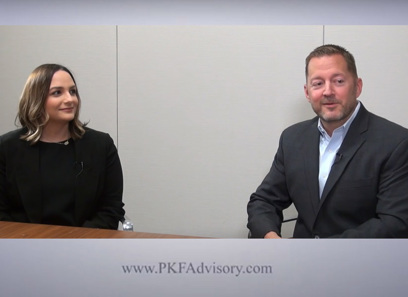Everything to Know About Purchase Price Allocation
Everything to Know About Purchase Price Allocation
Blog Article
A Comprehensive Overview to Comprehending Purchase Price Allocation in Mergers and Acquisitions
Understanding Purchase Price Allocation (PPA) is vital in the realm of mergers and procurements, as it straight influences financial coverage and tactical decision-making. By properly distributing the acquisition rate amongst identifiable possessions and obligations, organizations can ensure conformity with audit requirements while maximizing their monetary results. This overview provides a thorough exam of the approaches and finest methods connected with PPA, losing light on its value in M&A transactions. Nevertheless, the details of efficient allocation typically raise extra questions than they address, triggering a deeper expedition into the aspects that affect effective execution.
Interpretation of Purchase Price Allocation

The PPA procedure usually begins with the recognition of the purchase date, after which the acquirer should establish the total acquisition rate. This total consists of not only cash payments however additionally any contingent consideration, stock transfers, and obligations assumed. The next action includes assigning this acquisition cost to the reasonable value of each recognizable asset and obligation, which can consist of property, tools, copyright, and various other intangible properties.
In addition, any excess purchase cost past the fair value of identifiable internet properties is classified as goodwill. Precise PPA is crucial as it influences economic coverage, tax implications, and future incomes projections. By sticking to pertinent audit requirements, such as IFRS 3 or ASC 805, business make certain conformity and transparency in monetary reporting, which is vital for stakeholders and capitalists.
Value of PPA in M&A
Exact purchase rate appropriation (PPA) plays a substantial function in mergers and procurements, influencing various facets of the bargain's financial and operational outcomes. Properly implemented PPA ensures that the purchase price is suitably distributed amongst the recognizable possessions obtained and obligations assumed, offering a clear image of the investment's worth. This appropriation is important for monetary coverage and compliance with audit standards, as it straight impacts the acquirer's annual report and income declaration.
In Addition, PPA has implications for tax factors to consider. By properly determining intangible properties and their corresponding values, companies can maximize amortization schedules and tax obligation deductions, inevitably affecting their cash circulation. In addition, a well-structured PPA can enhance the understanding of harmonies prepared for from the purchase, guiding calculated decision-making post-acquisition.
In the affordable landscape of M&A, reliable PPA can likewise facilitate negotiations, as it supplies clearness and transparency pertaining to the assessment and worth of the target business. This accuracy can cultivate trust fund among stakeholders and add to smoother integration procedures. Ultimately, the value of PPA in M&A can not be overstated, as it lays the foundation for audio financial monitoring and strategic development campaigns following the transaction.
Key Elements of PPA
A comprehensive understanding of the crucial elements of purchase price allowance (PPA) is important for efficiently handling the complexities of mergings and acquisitions. The key aspects of PPA consist of the identification of the purchase cost, the fair value analysis of gotten possessions and liabilities, and the subsequent classification of these aspects.
Originally, the purchase cost represents the complete consideration moved by the acquirer, consisting of cash, stock, and various other types of settlement. Next, the fair worth of acquired identifiable assets and responsibilities have to be figured out, which commonly incorporates tangible possessions such as residential property and devices, as well as intangible assets like trademarks, patents, and client relationships. Precise appraisal is critical, as it impacts financial reporting and tax effects.
Furthermore, liabilities assumed in the purchase, including contingent obligations and financial obligation, must be analyzed at reasonable worth. The distinction between the complete acquisition price and the reasonable values of recognizable possessions and obligations leads to goodwill, which mirrors the costs paid for synergies and abilities not individually identifiable. Understanding these components ensures compliance with audit standards and improves strategic decision-making throughout the M&A procedure.
Methods for PPA
Numerous approaches are employed to perform acquisition price allotment (PPA), each offering distinctive strategies to valuing acquired properties and liabilities - Understanding PPA Allocation. One of the most typical methods consist of Understanding Purchase Price Allocation in Mergers and Acquisitions the cost approach, market strategy, and income strategy
The cost technique concentrates on the substitute expense of the assets, approximating what it would take to recreate the asset in its existing condition. This approach is especially valuable for tangible properties, such as building and equipment.

The earnings method, on the various other hand, stresses the here and now value of future capital expected to be generated by the possessions. This approach is especially appropriate for abstract assets, such as licenses and hallmarks, where future performance can be predicted.
Picking the ideal methodology depends upon the nature of the obtained possessions, market conditions, and the certain context of the transaction. Utilizing a mix of these techniques might additionally yield a more thorough view of the fair value of the properties and liabilities involved.
Finest Practices for Effective PPA
Just how can companies guarantee a seamless purchase rate allotment (PPA) procedure? Carrying out ideal techniques is crucial for achieving precision and compliance. First, organizations need to establish a clear framework that defines duties and duties throughout the PPA procedure. This consists of identifying vital stakeholders-- such as finance, legal, and functional groups-- that will certainly contribute to information collection and evaluation.
2nd, companies have to collect extensive and trusted information associated to the acquired assets and liabilities. This includes carrying out complete due persistance to analyze reasonable value and accountancy ramifications properly. Using third-party appraisal professionals can enhance neutrality and guarantee adherence to pertinent audit requirements.
In addition, it is necessary to preserve open lines of interaction amongst all events included. Regular conferences can help with the exchange of insights and deal with any kind of possible discrepancies early while doing so.
Last but not least, organizations must document all presumptions, methods, and searchings for diligently. This not only help in compliance yet likewise works as a referral for future procurements - Purchase Price Allocation in Mergers and Acquisitions. By adhering to these finest methods, organizations can boost the efficiency and efficiency of their PPA procedure, eventually sustaining better financial coverage and calculated decision-making
Conclusion
Finally, Purchase Price Allocation (PPA) is a crucial process in mergers and acquisitions that makes sure precise evaluation of identifiable assets and responsibilities. Following established approaches and best methods improves compliance with accountancy standards and supports notified economic decision-making. Reliable PPA not just maximizes monetary coverage and tax effects yet likewise strengthens the critical structure of the acquiring entity. Hence, an extensive understanding of PPA is essential for successful M&A purchases.
Report this page